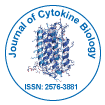Trans genesis and Novel Breeding Techniques in Biotechnological Plants
Received: 17-Mar-2022 / Manuscript No. jcb-22-57607 / Editor assigned: 19-Mar-2022 / PreQC No. jcb-22-57607 / Reviewed: 24-Mar-2022 / QC No. jcb-22-57607 / Revised: 29-Mar-2022 / Published Date: 04-Apr-2022
Editorial
The purpose of this survey is to identify and characterise new products in plant biotechnology that have been introduced since 2015, particularly in relation to the introduction of New Breeding Techniques (NBTs) such gene editing using the CRISPR-Cas system. We collect transgenic (gene transfer or gene silencing) and gene edited features that have been approved or commercialised in at least one country, or that are unregulated in the United States, as well as related patents from around the world. In addition, field trials throughout the continent are analysed to offer information on possible innovation for Africa. Agronomic advancements, industrial usage, and medical use, notably the development of recombinant medicinal compounds or vaccines, are among the categories of data compiled. Gene editing appears to be an effective supplement to ‘traditional’ transgenesis, whose use is not waning, rather than a replacement, according to the data, a pattern that can also be seen in the patenting environment. Nonetheless, there is a clear increase in the usage of gene editing. Gene editing has boosted the proportion of some crop species and lowered the proportion of others among approved, non-regulated, or commercialised goods as compared to transgenesis. For breeding qualities, there is a similar divergent trend. The establishment of new private enterprises has also been aided by gene editing. The patenting landscape is dominated by China, and particularly its governmental sector, but not the approved/ marketed one, which is dominated by the United States. The evidence suggests that regulatory settings will either encourage or hinder innovation.
Since the 1980s, the development of gene transfer technologies (transgenesis) has greatly aided basic and applied research, and some of its products have been commercialised since the mid-1990s. These strategies are referred to as “classical.” Sequence-specific nucleases, such as Zinc Finger Nuclease, TALENTs (Transcription Activator- Like Effector Nucleases), CRISPR-Cas systems (Clustered Regularly Interspaced Short Palindromic Repeats), and Oligonucleotide-Directed Mutagenesis (ODM) technologies, could be the next revolution in plant gene editing. The current review, which takes a different approach, compiles newly approved or marketed advancements in plant biotechnology and distinguishes traditional transgenesis from gene editing. Gene transfer is also separated from gene silencing using antisense or RNA interference approaches, commonly referred to as RNAi, in traditional transgenesis. The objectives are to chronicle how biotechnology might be used to address global agricultural concerns, as well as to investigate whether gene editing involves new plants, new features, or new actors, and whether traditional transgenesis techniques and gene editing are complimentary or competitive. The Orbit Intelligence database was used to find patents for inventions based on traditional transgenesis (gene transfer or RNAi) or the CRISPR-Cas technology. In the patent Supplementary file, the search query equation is shown. The 45 principal species collected in the ‘authorised and marketed’ section were used in this search. Patent records, comprising patent titles, abstracts, inventors, applicants, priority dates, and various reference numbers, were gathered into patent families (including all extensions of a specific invention) [1-5] .
The Orbit Intelligence database was used to find patents for inventions based on traditional transgenesis (gene transfer or RNA i) or the CRISPR-Cas technology. In the patent Supplementary file, the search query equation is shown. The 45 principal species collected in the ‘authorised and marketed’ section were used in this search. Patent records, comprising patent titles, abstracts, inventors, applicants, priority dates, and various reference numbers, were gathered into patent families (including all extensions of a specific invention). A large percentage of gene editing patents are held by smaller enterprises and academic labs. However, it is unclear how many products will make it to market and what the global implications of EU gene-edited plant legislation would be. While China is the undisputed leader in plant biotechnology patenting, it lags behind the United States in terms of product marketing.
References
- Lopez-Herrera Z, Tampella G, Pan-Hammarstrom (2012) Deleterious mutations in LRBA are associated with a syndrome of immune deficiency and autoimmunity. Am J Hum Genet 90: 986-1001.
- Fisher GH, Rosenberg FJ (1995) Straus SE Dominant interfering Fas gene mutations impair apoptosis in a human autoimmune lymphoproliferative syndrome Cell. 81: 935-946.
- Bettinardi D, Brugnoni E, Quiròs-Roldan (1997) Missense mutations in the Fas gene resulting in autoimmune lymphoproliferative syndrome: a molecular and immunological analysis Blood. Blood journals 89: 902-909.
- Rieux-Laucat, Le Deist, Hivroz C (1995) Mutations in Fas associated with human lymphoproliferative syndrome and autoimmunity Science . SCIENCE 268: 1347-1349.
- D. Schubert, Bode C, Kenefeck TZ (2014) Autosomal dominant immune dysregulation syndrome in humans with CTLA4 mutations. Nat Med 20: 1410-1416.
Indexed at, Google Scholar, Crossref
Indexed at, Google Scholar, Crossref
Citation: Martin-Laffon J (2022) Transgenesis and Novel Breeding Techniques in Biotechnological Plants. J Cytokine Biol 7: 404.
Copyright: © 2022 Martin-Laffon J. This is an open-access article distributed under the terms of the Creative Commons Attribution License, which permits unrestricted use, distribution, and reproduction in any medium, provided the original author and source are credited.
Share This Article
Recommended Journals
Open Access Journals
Article Usage
- Total views: 1556
- [From(publication date): 0-2022 - Mar 31, 2025]
- Breakdown by view type
- HTML page views: 1052
- PDF downloads: 504
